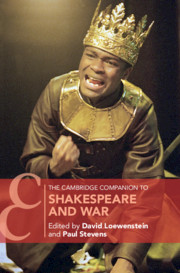A forgotten aspect of Henry viii’s architectural patronage and of the panoply of early modern European warfare is that of the timber lodging. Through two key case studies, this paper explores King Henry viii’s timber lodgings and demonstrates that not only did they form an important class of ephemeral architecture that successfully employed innovative technologies to make such structures portable for military campaigns, they were also used in conjunction with the royal tents to provide comfortable and secure battlefield accommodation for the king. The paper recreates their construction, functions, symbolism and elaborate appearance, revealing that the earlier timber lodging comprised a two-chambered wooden building which was painted externally to resemble brickwork and which was used at the sieges of Thérouanne and Tournai in 1513, while the later timber lodging was used at the siege of Boulogne in 1544. Through a close analysis of the surviving accounts for the making of the 1544 structure, the article demonstrates that it was an extravagant and architecturally pretentious building that combined the martial imagery of late medieval Gothic with refined touches of classicism. The paper also shows that the lodging used in 1544 is both recorded in the posthumous 1547 inventory of Henry viii’s possessions and appears in the engravings of the Cowdray House murals, held by the Society of Antiquaries of London.


